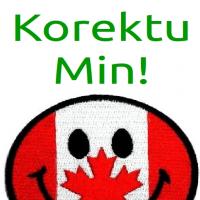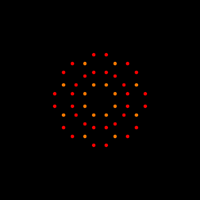訊息: 15
語言: English
IreneSimos (顯示個人資料) 2016年6月13日下午7:58:53
Here in Italy to complete our high school "career" we have to take one big final exam and present orally a subject of our liking. I chose to make my presentation on Esperanto because I deeply admire what it stands for. There's a problem though, I should be able to link it to a science (Maths, Science, Physics and Technology (IT)) but the only connection I can think of is how the brain learns a new language.
I was wondering if you could help think of any other connection between Esperanto and Sciences?
Thank you for your time.
I.S.
Mustelvulpo (顯示個人資料) 2016年6月13日下午8:23:58
noelekim (顯示個人資料) 2016年6月14日上午12:26:27
IreneSimos:Also worth exploring:
I was wondering if you could help think of any other connection between Esperanto and Sciences?
Thank you for your time.
I.S.
scholar.google.com Search for 'esperanto'
katalogo.uea.org Kategorio: scienco kaj tekniko
Akademio Internacia de la Sciencoj (AIS) San-Marino
www.ais-sanmarino.org
Balbutanto (顯示個人資料) 2016年6月14日上午1:53:13
To give credit where credit is due, the following idea came from my wife. Building an artificial language, like Zamenhof did, can be seen as a scientific endeavour. One has to use logic, systematize, make choices. Have a look at the late Umberto Eco's La ricerca della lingua perfetta nella cultura europea. An interesting read.
There's also a link with linguistics, the scientific study of languages.
Good luck!
Miland (顯示個人資料) 2016年6月14日上午7:17:02
IreneSimos:..I was wondering if you could help think of any other connection between Esperanto and Sciences?You might try contacting Federazione Esperantista Italiana.
The UEA catalogue lists a nice book contains dialogues on science which may be useful, but it's in Esperanto.
thyrolf (顯示個人資料) 2016年6月14日上午8:07:20
http://www.eventoj.hu/steb/
but it is IN Esperanto. Don't know, if You can use it
Alkanadi (顯示個人資料) 2016年6月14日上午8:29:51
IreneSimos:...I should be able to link it to a science (Maths, Science, Physics and Technology (IT))...You could compare human languages, constructed languages and programming languages. What is similar between them? What is different?
Have a look at, syntax, pragmatics, phonology, morphology, semantics, translation and interpretation.
Some interesting questions:
- Does Esperanto have algorithmic statements, such as "if", "while", "init", "break", ect...
- Why can't computers understand the connotation of words?
- Could Esperanto be a more useful tool for machine translation?
- How does technology adapt to accommodate languages such as Esperanto? example: Keyboard input.
Alkanadi (顯示個人資料) 2016年6月14日上午8:36:18
Then show how this can be applied to understanding a foreign language like Esperanto.
If someone had a piece of paper with Esperanto text, can you use math to break the code?
sudanglo (顯示個人資料) 2016年6月16日下午4:49:15
Esperanto has proved to be well suited with its extreme regularity and grammatical flexibility to machine translation compared to national languages. It is the ideal interlanguage
Without an interlanguage, to develop machine translation to handle 3 languages you will need to work on
A to B
A to C
B to A
B to C
C to A
C to B
For n languages the formula becomes n * (n-1). This gets to be a large number as n grows.
Using an interlanguage for 3 languages the project becomes
A to I, B to I, C to I and I to A, I to B, I to C,
The advantage is not apparent.
But for n languages the formula is 2 * n and this grows slowly as n increases.
If n is 10, one approach gives 10 * 9 = 90 development projects
The other approach gives 2 * 10 = 20 development projects - quite a saving.
There are 22 or so official languages in the EU. I leave it to you work out the difference.
Koracio (顯示個人資料) 2016年8月6日上午10:05:06





